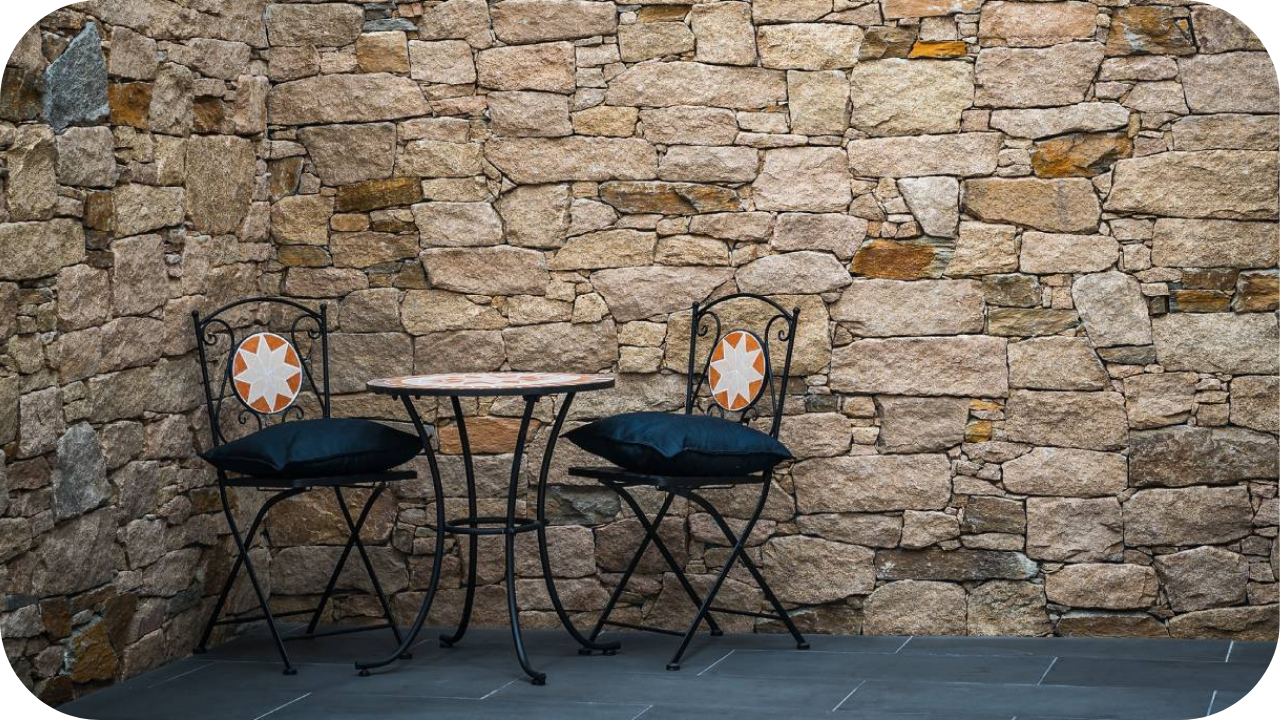
Granite pathways are beautiful additions to any outdoor space, but the harsh winter weather can take a toll on their appearance.
Freezing temperatures, snow, and ice can cause cracks, stains, and discolouration, making your once-stunning pathways look dull and unkempt.
Fortunately, with the right winter care techniques, you can protect your granite pathways and keep them looking their best throughout the season.
Understanding Granite Pathways
Granite is an igneous rock formed from the slow crystallisation of magma beneath the Earth’s surface. Its composition of quartz, feldspar, and mica gives it a unique and visually appealing speckled pattern. Granite pathways are created by cutting large slabs of granite into smaller pieces and laying them in a specific pattern.
The durability and longevity of granite make it an ideal material for outdoor pathways. With a hardness of 6-7 on the Mohs scale, granite is highly resistant to scratches, chips, and cracks. However, it’s not entirely impervious to damage, especially during harsh winter conditions.
Granite is a porous material, which means it can absorb water and moisture from rain, snow, and ice. This can lead to staining, discolouration, and potential cracking or flaking if the absorbed moisture freezes and expands within the stone. Additionally, the freeze-thaw cycles of winter can cause the mortar or grout between the granite pieces to degrade over time, leading to shifting or loosening of the stones.
Pre-Winter Preparation for Granite Pathways
Before the winter season arrives, it’s essential to prepare your granite pathways for the harsh conditions ahead. Start by thoroughly cleaning the surface to remove any dirt, debris, or stains that could become more difficult to remove once frozen.
Next, inspect the pathways for any cracks or loose stones and make necessary repairs to prevent further damage. Finally, consider applying a high-quality sealant designed specifically for granite, which will help protect the stone from moisture absorption and staining.
Snow and Ice Removal Techniques
Removing snow and ice from granite pathways requires a gentle approach to avoid scratching or damaging the surface. Use a plastic shovel or brush to clear away snow, taking care not to scratch the granite with metal tools.
For ice removal, avoid using rock salt or chemical deicers, as these can cause discolouration and pitting. Instead, opt for pet-friendly or plant-based deicers, or use sand or kitty litter for added traction.
Preventing Ice Formation on Granite Pathways
One of the most effective ways to prevent ice formation on granite pathways is to ensure proper drainage. Clear any debris or leaves that could obstruct drainage channels, and consider installing a drainage system or grading the area around the pathways to direct water away from the surface. Additionally, you can apply a thin layer of sand or kitty litter to provide traction and prevent ice buildup.
Protecting Against Freeze-Thaw Cycles
Repeated freeze-thaw cycles can cause significant damage to granite pathways over time. To protect against this, it’s crucial to seal the granite properly and repair any cracks or gaps as soon as they appear.
This will prevent water from seeping into the stone and causing expansion and contraction during temperature fluctuations. Additionally, consider covering the pathways with a breathable material during particularly harsh weather to shield them from direct exposure.
Monitoring and Maintenance During Winter
Throughout the winter months, it’s essential to monitor your granite pathways regularly for any signs of damage or deterioration. Look out for cracks, chips, or loose stones, and address any issues promptly to prevent further damage.
Regularly removing snow and ice buildup will also help maintain the pathways’ integrity and prevent potential hazards.
Post-Winter Clean-Up and Inspection of Granite Pathways
As the winter season comes to an end, it’s time to give your granite pathways a thorough cleaning and inspection. Remove any remaining debris, sand, or deicing materials, and use a mild granite cleaner to restore the surface’s shine. Inspect for any cracks, chips, or loose stones that may have occurred during the winter, and make necessary repairs. This is also an ideal time to consider resealing the granite to protect it for the upcoming seasons.
Long-Term Preservation Strategies
To ensure the long-term preservation of your granite pathways, consider implementing a regular maintenance schedule. This may include periodic cleaning, sealing, and inspections to identify and address any issues before they become more significant problems.
Additionally, consider seeking professional assistance for larger repairs or restorations to ensure the work is done correctly and extends the lifespan of your granite pathways.
Conclusion: Encouragement for Winter Care Tips
Protecting your granite pathways during the winter months may seem like a daunting task, but with the right care and attention, you can keep them looking beautiful for years to come. Implement these winter care tips diligently, and your granite pathways will remain a stunning and functional addition to your outdoor space. Don’t let the harsh winter weather compromise the beauty of your granite – take action now to safeguard your investment.
More To Explore

How to Install Hotham Granite Like a Pro
Hotham Granite delivers a refined, earthy finish with the strength to last decades. Its golden-grey tones work beautifully across outdoor feature walls, retaining structures, and

Cost-Effective Stone Pavers for Large-Scale Builds
Large-scale construction projects come with tight budgets, strict timelines, and the constant pressure to deliver without compromising on quality. Whether it is a public plaza,


